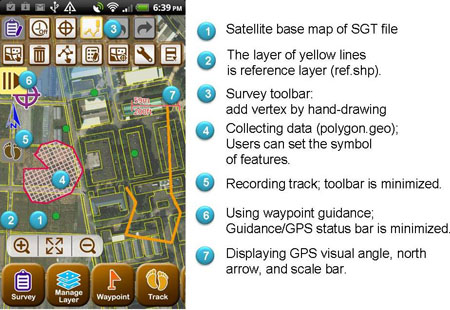- 1 reply
- 1,508 views
- Add Reply
- 0 replies
- 1,685 views
- Add Reply
- 0 replies
- 950 views
- Add Reply
- 0 replies
- 1,798 views
- Add Reply
- 3 replies
- 6,952 views
- Add Reply
Intergraph Enables Users to Exploit Power of 3D Geospatial Data with GeoMedia 3D

By Lurker,
Intergraph proudly announces the release of GeoMedia® 3D 6.1.1, providing a better way for organizations to exploit the precision and power of their geospatial data. 3D visualization provides the realistic view to facilitate smarter, more confident decision making and enhanced visual communication.
GeoMedia 3D is an add-on seamlessly connected to GeoMedia, enabling users to represent existing geospatial datasets in three dimensions through a new 3D map window. By fusing multiple data sources t
GTG’s MapNimbus GIS Public Access Portal is now on ArcGIS.com

By Lurker,
MapNimbus GIS Public Access Portal is now included in the gallery on ArcGIS.com. MapNimbus boasts a familiar and intuitive interface that is easy-to-use. MapNimbus allows users to search by address or agency to view a wide array of information about their area. Users can view information about crimes, sex offenders, restaurant grades, code enforcement, occupational licensing, building permits, child care facilities, lodging, and more! Users can also use powerful statistic and reporting tools to
Webminar : Manage, Analyze and Deliver Terabytes of Point Cloud & Image Data

By Lurker,
Dynamically Manage, Analyze and Deliver Terabytes of Point Cloud & Image Data
Wednesday, February 8, 2012 11:00 AM - 12:00 PM EST
Do you need to manage LIDAR and raster data, but have concerns about handling massive amounts of image files and LIDAR point cloud data?
Solving the issue of scattered, underutilized and redundant data, ERDAS APOLLO enables you to efficiently centralize, manage and deliver volumes of geospatial data to a large audience. You can create value-added data produ
SuperSurv 3.0, Mobile Survey System, Released Globally

By Lurker,


SuperSurv 3.0, released by SuperGeo Technologies, support bilingual user interface, traditional Chinese and English, and global coordinate system. SuperSurv is the mobile survey system operated on Android mobile device.
SuperSurv 3.0 focuses on the convenience of data collection in field survey and supports to display base map in SGT format and Web map services. Users can import vector layer for references to collect spatial data more effectively. With GPS, camera, and custom tables, users ar
ArcGIS 10 topology error
By vladutz,
Hi everyone,
I am trying to validate topology for a polyline feature class with 600.000 records but I am getting an error "Validate Topology failed. A failure was detected inside the topology engine overlay processor. [error id:220]". I have searched on ESRI page and I found that this error was fixed with a patch aplied on the SP2 and was included in SP3. Despite trying both fixes I still get the error. I have checked the geometry - it's ok. I have used enterprise GDB instead of file GDB - n
-
Forum Statistics
8.8k
Total Topics43.5k
Total Posts



